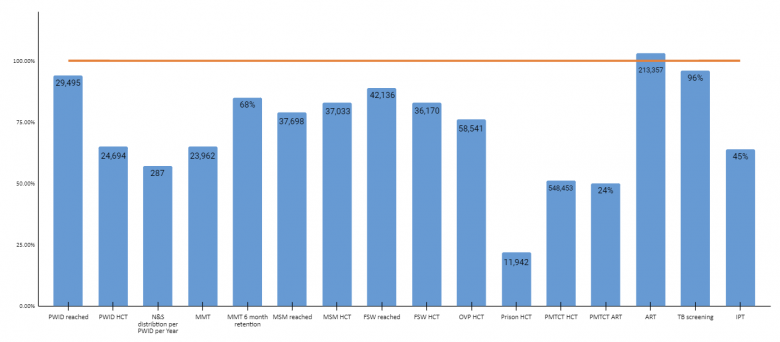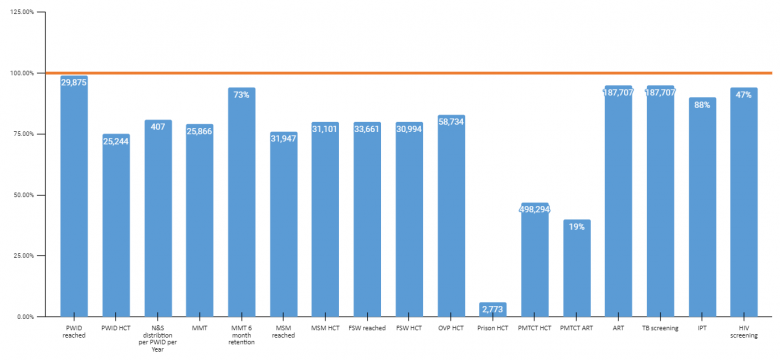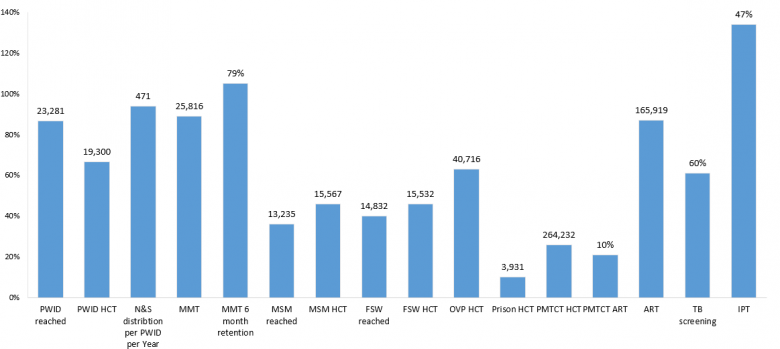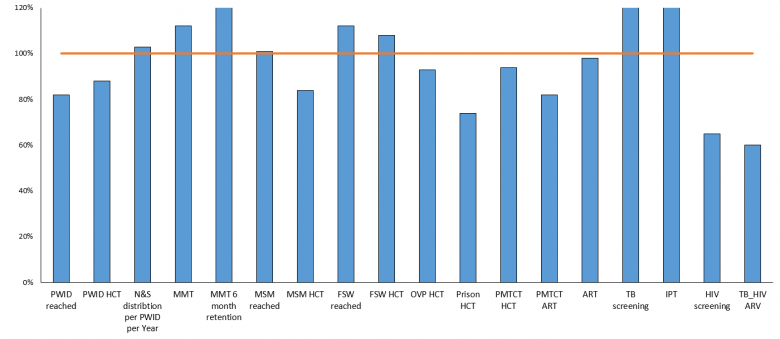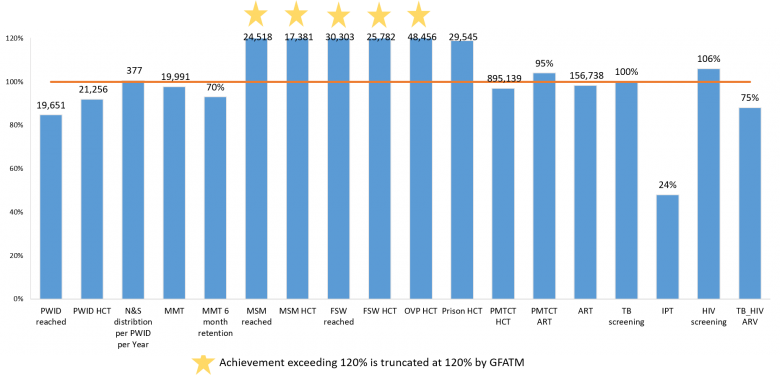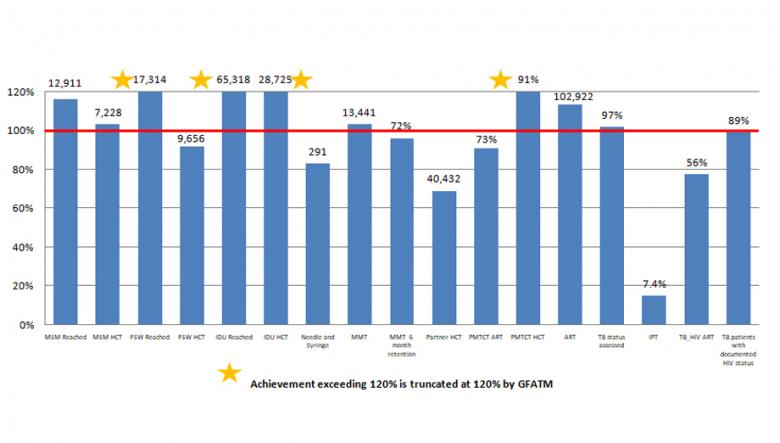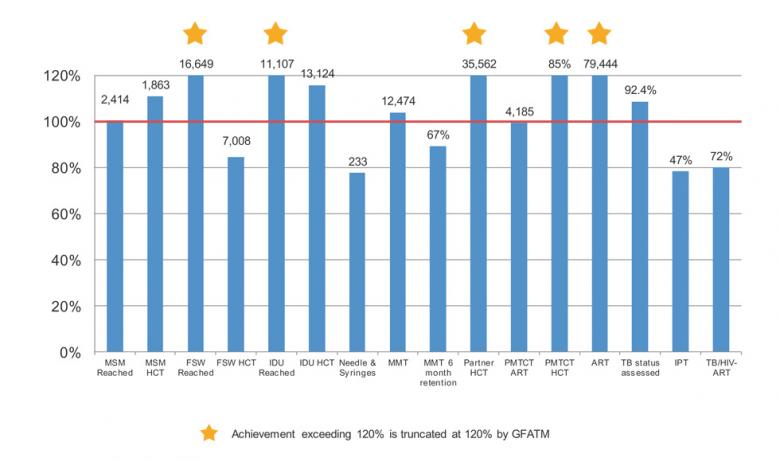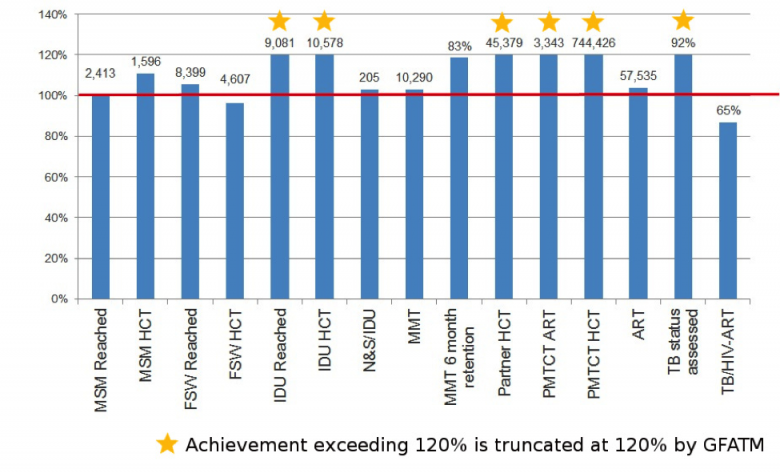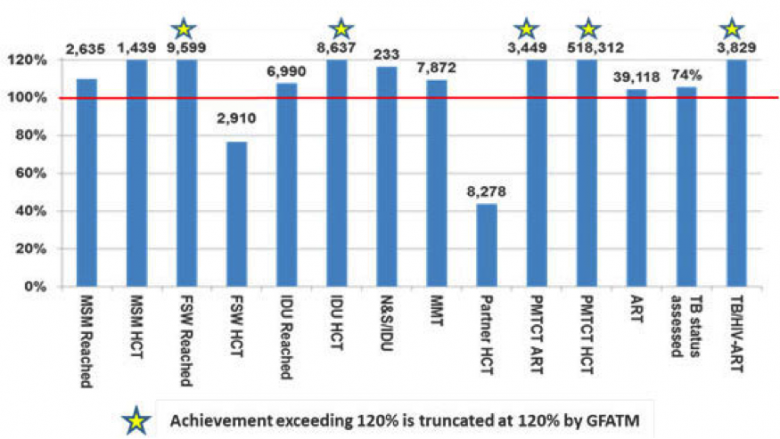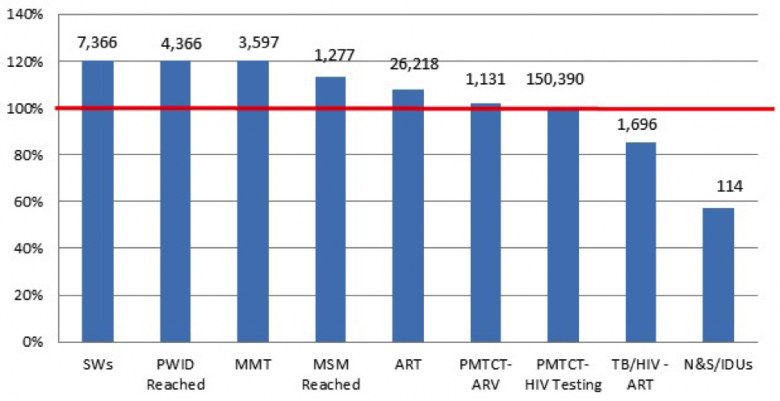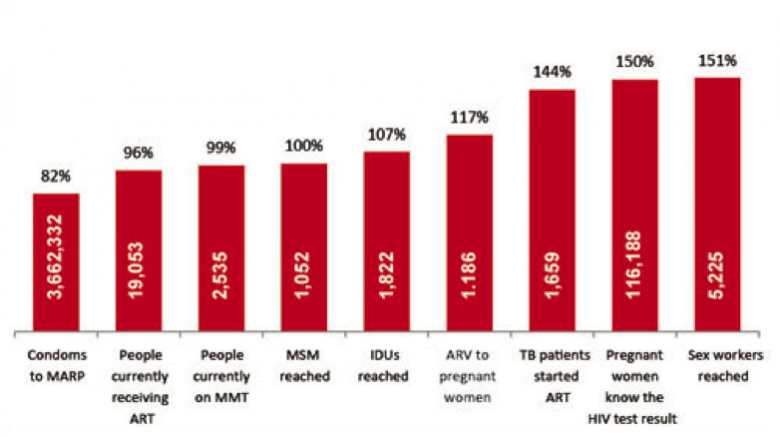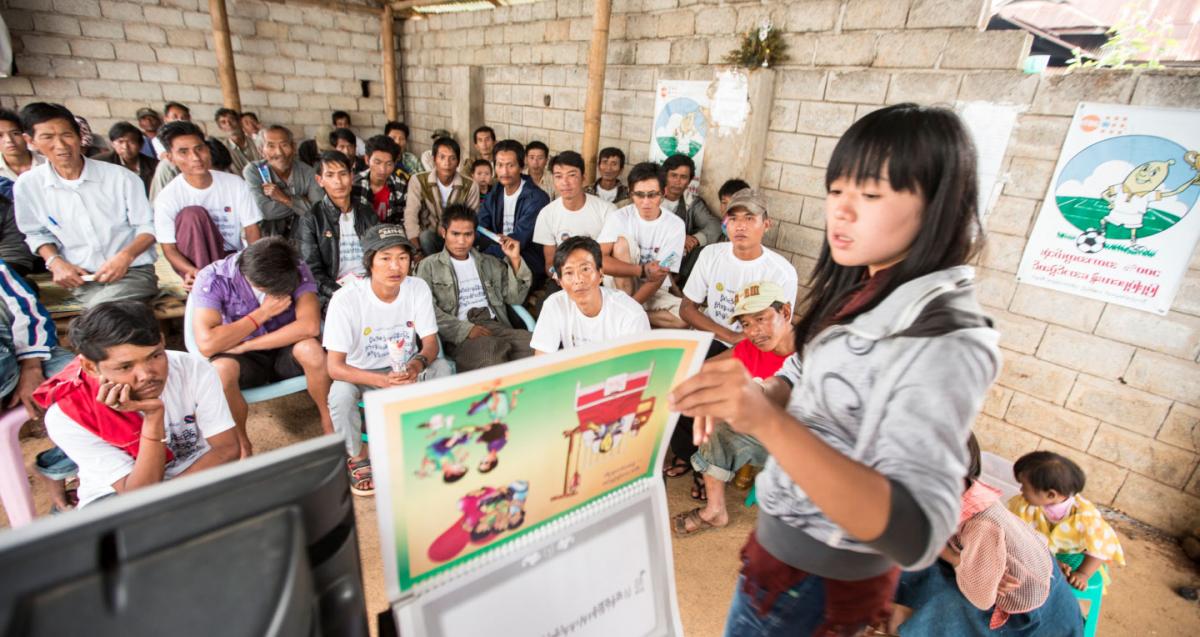Previous
Next
Key programme achievements in Jan-Jun 2025
Key programme achievements in 2024
Key programme achievements in 2023
Key programme achievements in 2022
Key programme achievements in 2021
Key programme achievements in 2020
Key programme achievements in 2019
Key programme achievements in 2018
Key programme achievements in 2017
Key programme achievements in 2016
Key programme achievements in 2015
Key programme achievements in 2014
Key programme achievements in 2013
Key programme achievements in 2012
Key programme achievements in 2011
HIV Programme at a glance
1. Goal:
To reduce HIV transmission and Improve life-saving for People Living with HIV (PLHIV)
2. Target Group/Beneficiaries:
- People living with HIV (PLHIV);
- People who inject drugs (PWID) and People who use drugs (PWUD);
- Men who have sex with men (MSM);
- Transgender persons (TG);
- Sex workers (FSW) and their clients;
- People in closed settings (including prisons, detention and rehabilitation centers);
- Sexual partners of priority populations;
- Young priority populations, children and Pregnant women;
- Other vulnerable populations including migrant and mobile populations.
3. Objectives:
- Reduce HIV incidence among priority populations and their partners;
- Improve the quality of care and increase accessibility for ART;
- Ensure viral suppression for all PLHIV;
- Improve the enabling environment to support the national HIV response.
4. Planned Activities:
- Strengthening of effective combination prevention interventions for priority populations and promoting community-led approaches;
- Expansion of HIV testing for key populations and their sexual partners (facility-based and community-based testing);
- Enhancing knowledge and understanding of the community and faith-based organizations about harm reduction and other HIV-related services;
- Strengthening community engagement in service delivery, ensuring right-based and gender mainstream across the continuum of care;
- Eliminating mother-to-child transmission of HIV and Syphilis;
- Improving access to care and quality of care (Expansion of ART initiation and retention on ART and viral suppression);
- Management of co-infections, including Hepatitis C;
- Improving monitoring and reporting systems for quality data and better performance;
- Improving the legal and policy environment to reduce the structural and policy barriers affecting the HIV services for priority populations and the development of policy and assistance in drafting legislation and regulations for key populations;
- Ensuring sustainable human resources for health (capacity building for basic health staff and community, integration of community-based health workers policy).



